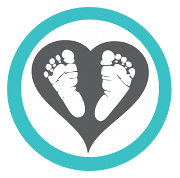There was a touching scene in the sitcom Friends, where Rachael is nursing her new baby, and the father asks her what it feels like, to which she says "strange", and he says "good or bad strange", and she replys "wonderful strange."
Since time began...
The idea of working while breastfeeding is not new. What's different now than in times past is the type and location of the work we do. Women in earlier times were not separated from their babies and their work may have consisted mostly of household duties - think of pioneers here, farming, baking from scratch, caring for fires, grinding, weaving, sewing, etc. That was tough work, but breastfeeding was considered natural and normal and a woman would not even consider doing otherwise, in spite of her busy schedule. If something happened that prevented the mother from nursing her infant, a wet nurse was the next option.
Why make the effort?
There is no better way to feed your baby (to say nothing of the long-term cost savings). Breast milk is the ideal food for babies and should be the exclusive nutrition for the first six months of life at which time solids are added to the diet. The American Academy of Pediatrics and the World Health Organization have made this official statement. Ideally breast milk will continue to provide the milk nutrition for the first one to two years (longer if desired).
The antibody protection breastfed babies get is a big bonus. Breastfed babies are ill less often, have fewer ear infections, upper respiratory infections, allergies, asthma, GI problems, childhood obesity (to name a few) so you lose less work time for doctor visits and caring for sick children who can't attend day care. Another factor to consider is that you will never again get this opportunity with this baby to give her the best, perfect food that's all natural!
How can I do it?
In the ideal Employed Mom World, the baby could be on site and available for direct nursing whenever needed. If you can't be with your baby the next best option is to provide your perfect milk by pumping your breasts while at work. It is possible to breastfeed directly when you are at home with the baby, then use pumped milk from the bottle for feedings when you are away. By continuing this schedule you will not lose your milk and on weekends, holidays, mornings before work and evenings after work you can still do it the natural way. Most babies can learn to do both if they learn to breastfeed well in the first few weeks without supplements. They prefer the taste of their mother's milk and it changes with the changing needs of the baby, continuing to provide antibody protection for them. It is worth the effort. Here are some experts' suggestions to work without weaning.
To the employer...
Take time in advance to discuss your plans with your supervisor and get supportive materials you may need to make your case. Often if the employer realizes that a healthier baby means less sick days for you, they are happy to accommodate whenever possible. The two of you may need to be creative, but it can be done in almost any setting if you have the desire and determination. Your healthcare provider, lactation consultant or even WeeCare nurse can write a letter to the employer encouraging them to consider the benefits and the reasons it is important for you to be able to continue breastfeeding. Word is getting out but there's still a mindset among many to "just give the baby formula," assuming it is the same (It is NOT). You may be a pioneer yourself in this and it will help future new moms as well.
At Work and Pump.com Kirsten Berggren, PhD, CLC offers links to other good breastfeeding sites and she has written a book, Working Without Weaning published by Hale publishing (a pregnancy and breastfeeding specific publisher)
Dr. Jack Newman (pediatrician and lactation specialist) offers good information in his article, What to feed the baby when the mother is working outside the home. Click here.
Familydoctor.org shares these suggestions:
What you need to pump your breasts at work
- Breast pump, plus electrical adapter if needed. Extra batteries if you are using a battery-powered pump.
- A small cooler, plus ice, if a refrigerator is not available for storing your milk at work. If you forget the cooler, breast milk can be stored at room temperature for 4 to 8 hours.
- Enough milk storage containers for the number of pumping sessions you will need during your workday.
- An extra shirt, sweater or vest to wear in case your breasts leak. It is a good idea to wear shirts with patterns on them because milk is harder to see on patterned material.
- Clothing that makes it easy to get to your breasts. Your clothing should open in the front.
- A shawl or small blanket for privacy if you need to pump in a common area.
- A water bottle and healthy snacks. Women who are breastfeeding need extra calories.
- A pillow for supporting your arm while you pump your breasts. This may make pumping more comfortable.
- A “do not disturb” sign if you are pumping in a shared space.
Optional
- A portable radio or tape or CD player (plus your favorite music), an entertaining book or a magazine. If you are relaxed, your breasts will release milk more easily (the “let-down reflex”) and you will be able to pump your breasts better.
- A picture of your baby or an item of your baby’s clothing. Thinking about your baby can stimulate the let-down reflex.
Best for Babies























No comments:
Post a Comment
This blog only reviews comments before posting to avoid hijacking. We will respond to comments Mon-Thurs but we are closed Fri-Sun and legal holidays.